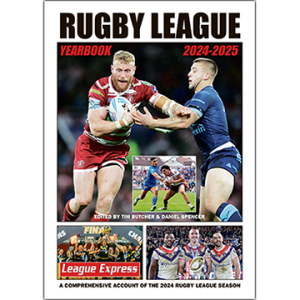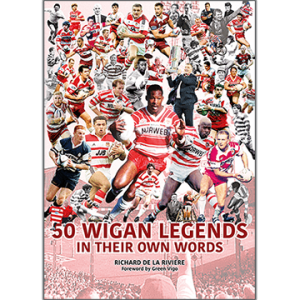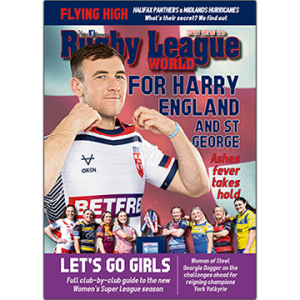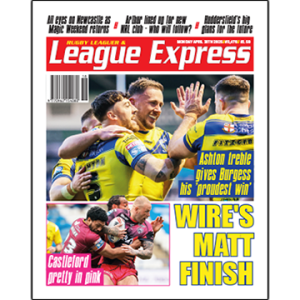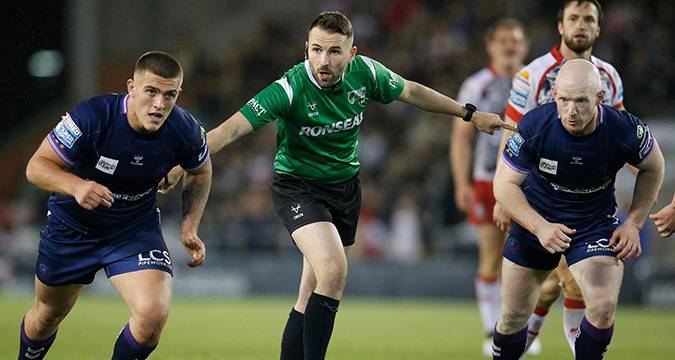
RUGBY LEAGUE today is not the same game as it was when I was growing up.
It looks and feels different.
The changes we have witnessed are partly a result of full-time professionalism among players and match officials, the introduction of substitutes, the change in the season from (mainly) winter to (mainly) summer, particularly in relation to the quality of pitches, and developments in the laws of the game.
In this month’s column it’s the latter that I want to focus on.
Sometimes it’s fair to describe rule modifications as major changes to the laws of the game. Moving the defensive line to ten metres, which happened in 1993, is the best example.
But it never ceases to amaze me how seemingly very minor changes in the rules can have profound consequences.
The best example of this is the decision to take the corner flag out of touch, which was made by the NRL in 2010 and implemented in Super League from 2012.
That decision alone revolutionised wing play and led to some spectacular tries, perhaps the most notable having been seen this season in the NRL when Melbourne Storm winger Xavier Coates touched down for an astonishing try that won the game against New Zealand Warriors.
No doubt we will see many other rule changes in the future but there are several that I would like to see and which would, in my view, add to the spectacle of the game and potentially increase the excitement quota.
The first change I would like to see is to the set restart (or ‘six again’) rule, which I’ve never liked much in its current form, although I can understand the reason for its introduction, which was mainly to cut down wrestling by the defending team in the ruck. Conceding six more tackles effectively cuts out that sort of interference.
But I think six more tackles for what might be marginal offences is taking a sledgehammer to crack a walnut.
If the ‘six again’ was reduced to ‘one again’, so that the attacking team was awarded one extra tackle, I’m sure it would have the same deterrent effect while not skewing the game in the way that an extra six tackles does. I suspect that a one extra tackle would be more acceptable to spectators and to the clubs.
What other rules would I change or modify?
There are some rules that need tidying up.
First of all, what is the point of the double-movement rule?
How many great tries do we see turned down by the match officials because a player’s arm hit the ground before he touched down the ball? Why do we have this rule?
I think it’s ridiculous to see a video referee trying to decide whether the try-scorer touched down with momentum or not.
Let’s get rid of it and allow players to score a try regardless of whether their elbow hit the ground a few centimetres from the try line. The only way a try should be turned down is if the referee has called ‘held’ before the player has touched the ball down.
The next rule that is now outdated is the voluntary tackle rule: “A player in possession shall not deliberately and unnecessarily allow themselves to be tackled by voluntarily falling to the ground when not held by an opponent.”
When was the last time you saw a player penalised for infringing this rule? On the other hand, how often do you see a player throwing himself to the ground to try to avoid being pulled into touch or into his own in-goal area?
The rule is clearly an anachronism and should be consigned to history.
The next rule I would like to modify is the knock-on rule, particularly when players from opposing sides are trying to catch a kick. Often we find that the ball bobbles about between the players before one of them comes away with it, sometimes to score a spectacular try, but the play is brought back for a knock-on.
In my view, only when the ball has actually fallen to the floor should it be deemed to be a knock-on. In other words, two players can compete for the ball in the air and one of them can come away with it legally, even if the ball has bobbled between them.
Finally, the final hooter sounds after 80 minutes and the game ends with the next tackle.
This is in contrast to rugby union, where play continues until the ball goes out of play (into touch, for example).
We should amend our rules to do likewise, giving a team that is just behind on the scoreboard more time to try to recover for a thrilling end to the game. It’s almost the only time I find rugby union exciting and I would like to see the same in our sport.
So let me know what you think of these ideas.
First published in Rugby League World magazine, Issue 495 (April 2024)
Click here to subscribe to the print edition of Rugby League World

